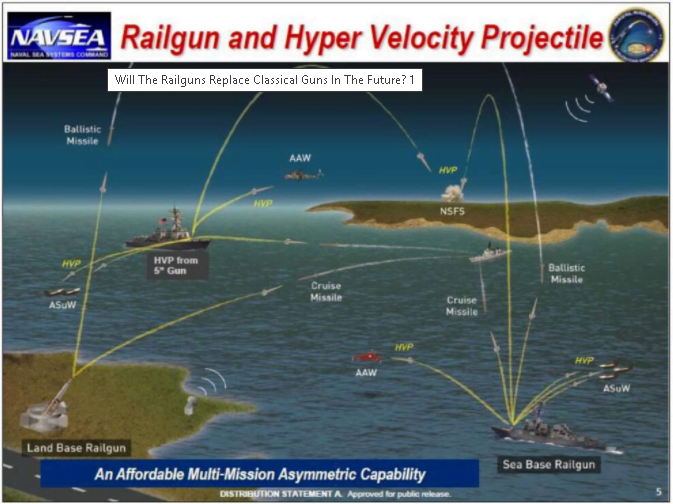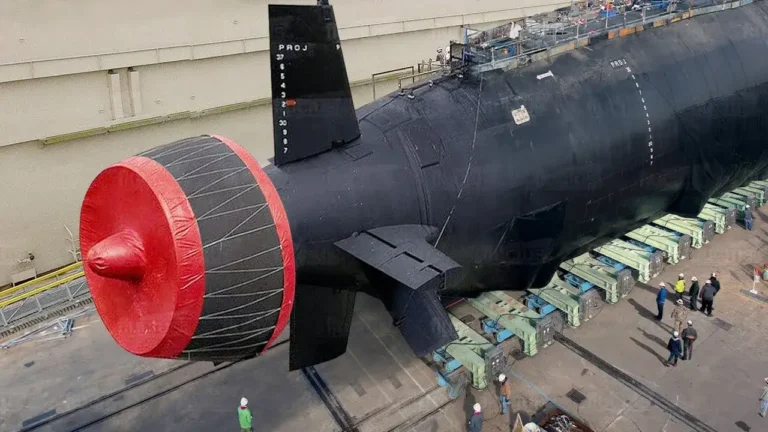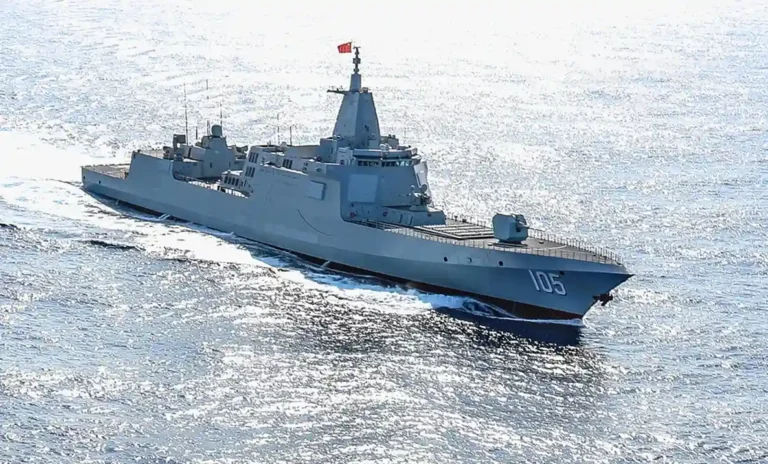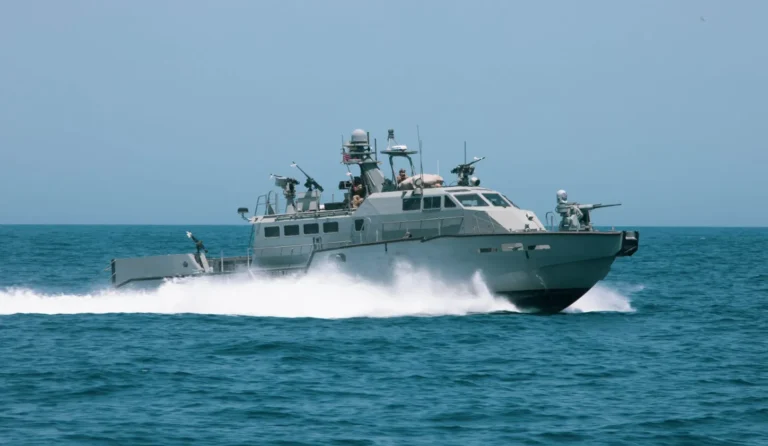Follow Us:
Share
Table of Contents:
Defense Feeds – This time we are going to take a look on a high-tech weapon firing projectiles at tremendous speeds even up to six to seven times faster than sound! Yes, such of this typical weapon is called Railgun! Perhaps, it might come into mind “would it be possible if this weapon replace conventional guns in the future?”

Anyway, I don’t think anyone will get the real answer until you guys are read the full review of today’s
It is widely known that technology is on the way to making step from science fiction into reality in the twenty-first century. When compared to smart bombs and missiles, the concept has the potential to provide an effective weapon for pennies on the dollar.
Railguns, the weapons that propel projectiles over 100 miles at hypersonic speeds utilising electrical power, instead of using gunpowder or jet or rocket motors, it employs electricity.
As of 2020, railguns have been researched as weapons utilising electromagnetic forces to impart a very high kinetic energy to a projectile rather than using conventional propellants.
Weapon replace conventional guns in the future?
In addition, the concept of the railgun was first introduced by French inventor Andre Louis Octave Fauchon-Villeplee, who created a small working model in 1917 with the help of Tudor Batteries.
This concept has been continuously developed. During 1950, Sir Mark Oliphant, an Australian physicist and first director of the Research School of Physical Sciences at the new Australian National University, began designing the world’s largest (500 megajoule) homopolar generator.
This machine was operational from 1962 and was later used to power a large-scale railgun that was used as a scientific experiment.
It can be noted that there have been many evolution taken place in regard to the development of railgun.
Until 2010, the United States Navy tested a BAE Systems-designed compact-sized railgun for ship emplacement that accelerated a 3.2 kg (equals to 7 pound) projectile to hypersonic velocities of approximately 3,390 m/s or about Mach 10, with 18.4 MJ of kinetic energy, it was then claimed as the first time in history that such levels of performance were reached.
How the system works railgun
Are you curious on how the system works and its recent updates, the following sections will provide you a brief explanation on these information, so here’s the full review how the system work!
In regard to how it works, unlike contemporary artillery shells, railgun projectiles contain no explosives. Just the kinetic energy imparted by the projectile, which travel around six to seven times the speed of sound, it may rip through steel or concrete, destroying anything in its path.
It has the potential to provide a powerful weapon at a lower cost of smart bombs and missiles. Due to its advantages, the U.S Navy is currently considering the first viable rail guns to complement more conventional naval artillery weapons.
As it has the potential to provide a powerful weapon at a lower cost of smart bombs and missiles.

As an intensification of this notion, the Navy has tested at least two alternative railgun designs, one from BAE Systems and the other from General Atomics, with the former serving as the main prototype in prior R&D work.
Both of these weapons were similar in that they used powerful electrically generated magnetic fields to propel solid projectiles. In land-based testing, Office of Naval Research (ONR) reported that at least one of these weapons has exhibited the capacity to fire rounds at speeds greater than 4,500 miles per hour, or roughly six times the speed of sound.
Also, in the same year, it demonstrated that it could fire a salvo of rounds from the BAE Systems prototype in a relatively short period of time. The stated goal at that time was to develop a design capable of hitting targets of various kinds, ranging from ships and threats ashore to aircraft and incoming missiles, up to 100 miles away.
It can be noted that there is a sign of interest on the development of railgun, as several countries involved on the ongoing projects including India, Russia, Turkey and China. For instance, A Chinese railgun installed on a decommissioned landing boat was discovered on the Yangtze River in 2018.
Before it arrived in the open ocean later that year, the Haiyanshan was dubbed the “Yangtze Sea Monster.” The electromagnetic railgun will be installed aboard naval warships by 2025, according to the PLA navy.
Meanwhile, the ahi-209 Turkish Rail Cannon (which fires ammunition using electromagnetic power) will be incorporated into a navy vessel for sea trials of the Block-II version of the gun.
Turkey will be the third country, using the railgun at sea. At the same time Rusia seems does not want to be left behind, as the Russian Navy intends to install Electro Magnetic Railgun on Slava-class cruisers.
Also, in 2017, India’s Defence Research and Development Organization successfully tested a 12 mm square bore electromagnetic railgun, however it is still in under development. Developing Electromagnetic Railgun (EMRG) is likely to be a new field of race. As EMRG’s advantages emerge, it’s not hard to anticipate that it would possibly replace the existing guns in the future.
The Congressional Research Service released a report earlier this year stating that the Navy had been developing the railgun as a firing weapon to support U.S. Marines operations.
The report said the development also focused on the possible use of the railgun as a missile defence system. The Navy spent approximately $500 million on research and development of the railgun, as mentioned by Bryan Clark, a defense expert at the Hudson Institute.
Several research have been conducted as a part of Electromagnetic Railgun development project, such as tested the railgun over the Potomac River in December.
Despite the fact that the findings of the test were not released, this shows that the US Navy’s interest in railguns is very much apparent.
Moreover, on Feb. 12, 2018, the Navy released its proposed funding allocation for the 2019 fiscal year, which include almost $45.8 million for research and development into both electromagnetic and directed energy weapons, reflecting the latest phase in the project’s evolution. This is a common fund that will be used to fund the railgun project.
Can railgun weapon replace conventional guns in the future?
However, in spite of its advancement and the possibility to displace the traditional weapons in the subsequent years, the advancement of railgun experienced numerous problems, including inadequate range of railgun in testing. In addition, its usefulness for missile defence was also limited by range and rate of fire as mentioned by Clark.
Furthermore, a normal gun can be fired about 600 times before the barrel must be refurbished, while the barrel on the railgun prototype had to be replaced after roughly twelve and twenty four shots were fired.
It can be concluded that even though some advantages on the railgun mentioned above, it cannot be denied that railguns are still at the research stage after decades of development, and it is unclear yet whether they will ever be used as actual military weapons.
For weapons applications, any trade-off analysis between electromagnetic (EM) propulsion systems and chemical propellants should take durability, its energy demand, complexity, into account.
Share
Defense Feeds
Defense Feeds is publication focusing on informing, engaging, and empowering the world by providing accurate information from defense technology.
Powered by Defense Feeds © 2025 – All rights reserved.




